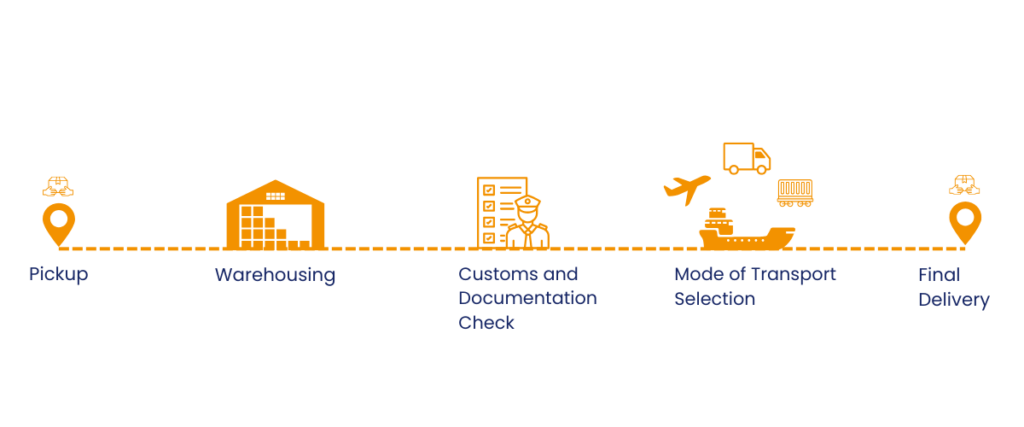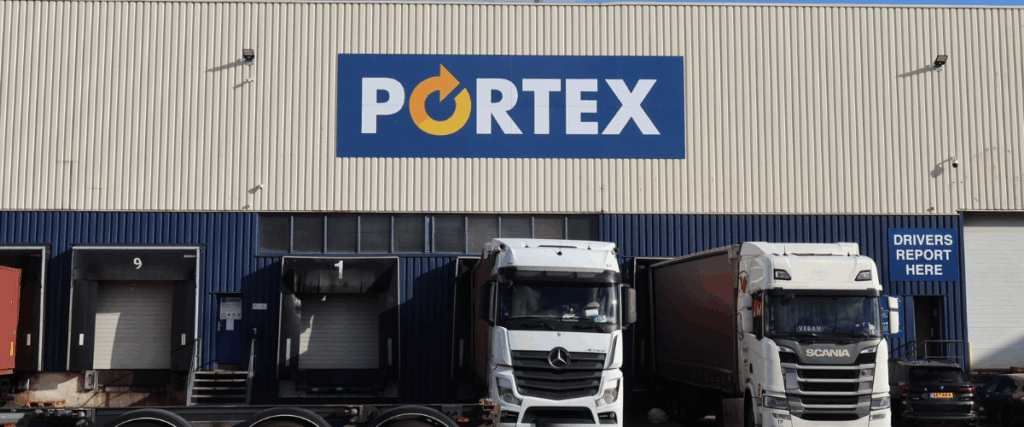Are you not sure where to start when transporting ship spares? Whether you’re shipping a small electrical unit or a full engine assembly, the shipping process demands precision, coordination, and reliable logistics expertise. This guide focuses on how you can transport ship spares from the Netherlands, one of Europe’s most connected gateways for maritime supply chains so you can plan confidently and ensure every shipment arrives exactly where it needs to be.

Transportation Options
Ship spares can be transported with several transport methods; each suited to specific timelines, destinations, and cargo requirements:
Strengths: Highly flexible, fast within Europe, ideal for door-to-door deliveries and urgent spare parts.
Limitations: Not suitable for extremely heavy or over-sized cargo.
Choose for: Intra-European deliveries and last-mile connections to ports, warehouses or repair yards.
Strengths: Cost-effective for bulk cargo and a more sustainable option for long-distance transport.
Limitations: Limited direct access to ports and slower schedules compared to roads.
Choose for: Large or consolidated shipments across continental Europe.
Strengths: Fastest method for urgent or high-value goods, offers global reach and minimal transit time.
Limitations: Higher costs and limited by weight and size restrictions.
Choose for: Time-critical deliveries or small, valuable components.
Strengths: Most cost-effective for large or heavy cargo, well-suited for long-distance and international deliveries.
Limitations: Longer transit times and complex documentation processes.
Choose for: Overseas deliveries beyond Europe, such as to the USA, Asia, or Africa.

Special Handling (ADR / IMO-certified cargo)
If your ship spares include items like batteries, fuel pumps, or navigation systems, special handling is essential to prevent leaks, corrosion, or other risks. Reinforced packaging, moisture protection, and shock-resistant materials help maintain product integrity during transit, while temperature-sensitive cargo requires controlled environments to preserve quality.
Many marine parts are also classified as hazardous goods under ADR (European Agreement concerning the International Carriage of Dangerous Goods by Road) or as IMO-certified cargo for sea transport, both of which set strict standards for labeling, packaging, and documentation to ensure safety and environmental protection. To stay compliant, it’s vital to work with certified carriers and trained personnel authorized to handle such cargo safely and responsibly.
Required Documentation
The key documents you should prepare when arranging ship spares transport are:
- Commercial Invoice: Lists the value, description, and terms of sale for the goods. It’s one of the main documents used by customs authorities for clearance and duty calculation.
- Packing List: Describes how goods are packed, including their weight, dimensions, and markings. This helps handlers and customs officials verify the shipment quickly and accurately.
- Certificate of Origin: Confirms where the ship spares were manufactured and may be required for preferential tariff treatment under certain trade agreements.
- Export/Import Declaration: Needed when goods cross international borders, allowing customs authorities to monitor and regulate global trade.
- CMR Consignment Note (for Road Freight): A standardized document used across Europe to confirm the transport contract between sender and carrier for road shipments.
- Bill of Lading / Air Waybill (for Sea or Air Freight): Acts as proof of shipment and outlines the terms of carriage. It also serves as a receipt confirming that the goods have been loaded.
- Dangerous Goods Declaration (DGD): Required for hazardous cargo, such as batteries or fuel-related components. This document identifies the classification, packaging, and handling requirements in line with ADR or IMO regulations.
Differences of documentation between Europe and abroad
While most of these documents apply to shipments worldwide, the exact requirements depend on where your goods are headed. Within Europe, ship spares move under CMR regulations for road freight and require ADR documentation if they contain hazardous materials. Customs duties generally don’t apply within the EU, but a commercial invoice and packing list is essential for verification and transport records.
For international shipments outside the EU, additional documents (such as a Certificate of Origin, Export/Import Declaration, and a Bill of Lading or Air Waybill) are required for customs clearance at both ends of the journey.
*When booking your shipment, we can assist you by verifying which documents are needed for your specific route and reminding you of any special requirements in advance.
The Ship Spares Transport Process

- Pickup from your desired location: Whether a supplier, shipyard, or warehouse within the Netherlands or nearby regions. At this stage, all necessary shipping and customs documents are verified.
- Transport to the Warehouse in Rotterdam: Once collected, the cargo is brought to a central hub (often a warehouse near the Port of Rotterdam). Here, goods can be inspected, repackaged, or temporarily stored before final delivery.
- Customs and Documentation Check: For international shipments, customs documentation and safety certificates (ADR, IMO, or MSDS) are reviewed and cross-checked to guarantee full compliance.
- Mode of Transport Selection: Depending on your destination, urgency, and cargo type, the shipment is dispatched by road, rail, air, or sea.
- Final Delivery or Onboard Transfer: Upon arrival at the destination port, ship spares are delivered directly to the vessel, shipyard, or consignee’s warehouse. In some cases, onboard delivery is arranged through coordination with the port agent.
- Post-Delivery Follow-Up: After completion, tracking data, proof of delivery, and condition reports are shared with you, ensuring transparency and reliability throughout the journey.
While the process follows a structured workflow, it remains flexible for whether you require instant delivery, temporary storage, or consolidated shipments. This approach ensures that your ship spares arrive safely, on time, and in full compliance with all relevant regulations.
Transport your Ship Spares with Portex
If you need to transport ship spares, we can help. Our team understands the urgency behind every delivery and the precision required to keep vessels running smoothly. Based near the Port of Rotterdam, we coordinate shipments across Europe and beyond by ensuring each part arrives safely, efficiently, and on schedule.
Request a custom quote or contact our team today to plan your next ship spares transport from the Netherlands.

Frequently Asked Questions (FAQs)
| Some of my parts are batteries and pumps. Are these considered hazardous? Yes, marine parts such as batteries, fuel systems, or chemicals fall under ADR or IMO regulations. These items are classified as hazardous and must be packaged, labeled, and documented according to strict safety standards. |
| How long does it usually take for ship spares to be delivered? That depends on where they’re going and how they’re shipped. Within Europe, most deliveries take 24–72 hours, while overseas shipments depend on air or sea freight schedules. |
| Do I need to prepare any special documents for my shipment? Yes, especially for international deliveries. You’ll need a commercial invoice, export declaration, and sometimes a certificate of origin. |
GET IN TOUCH
